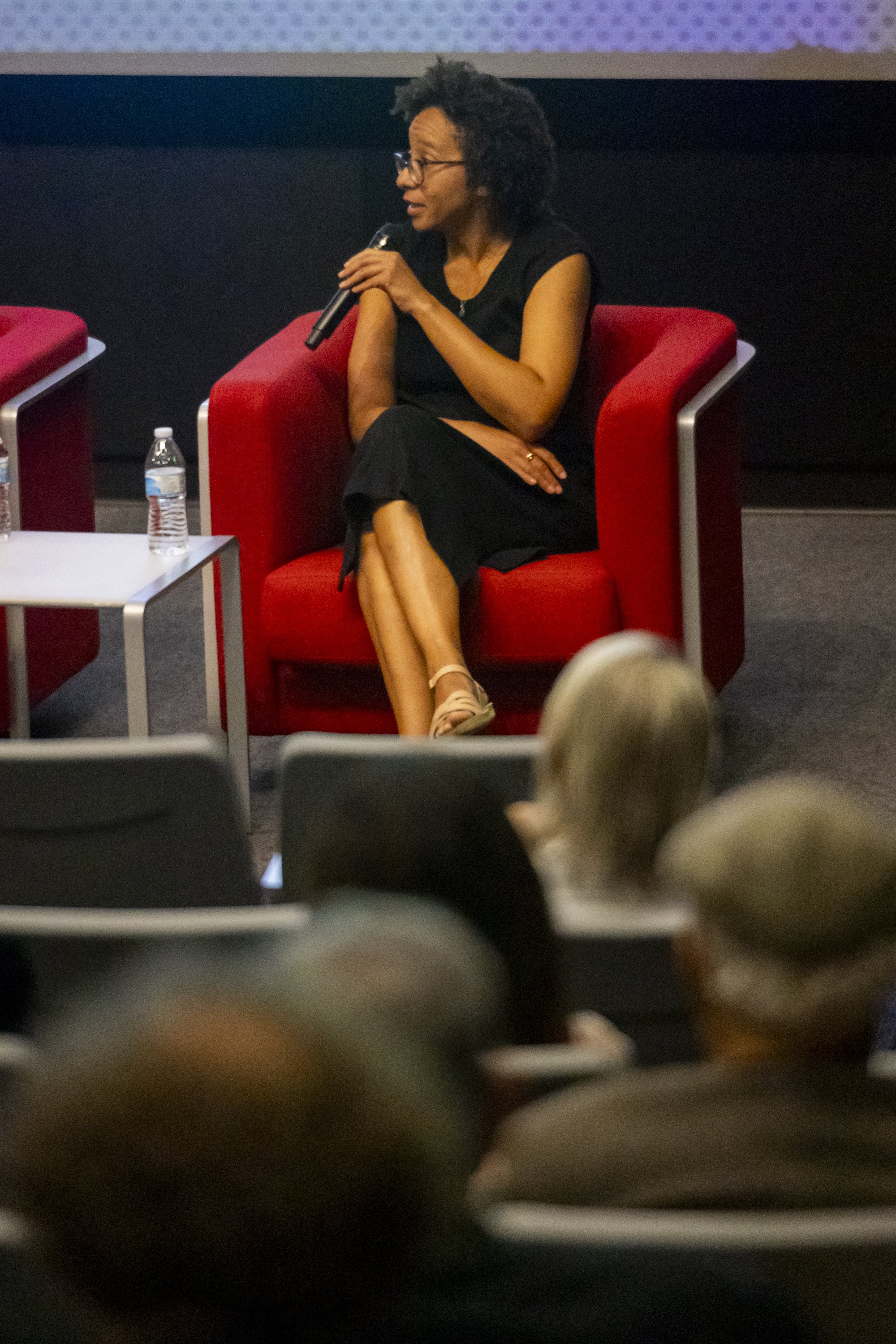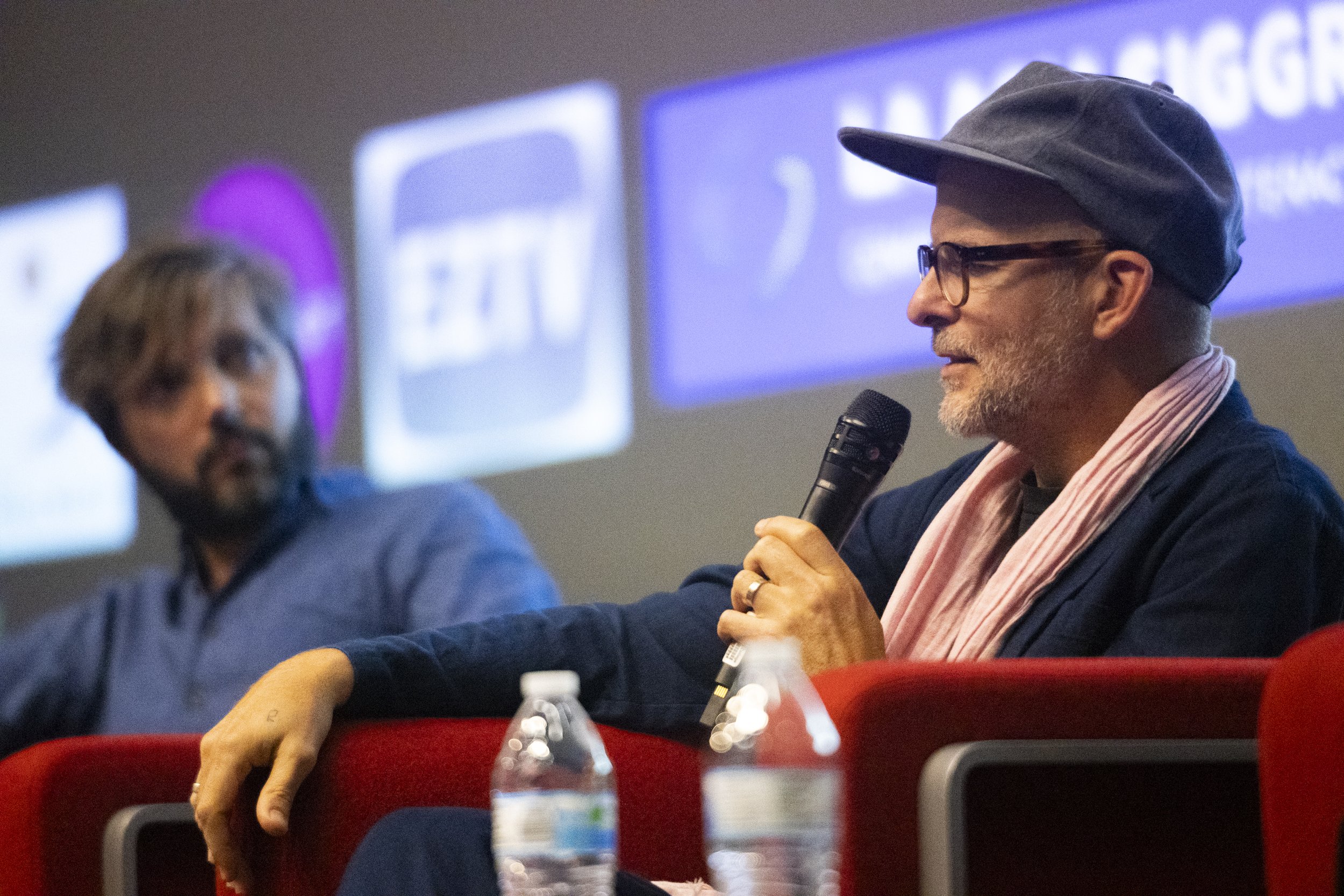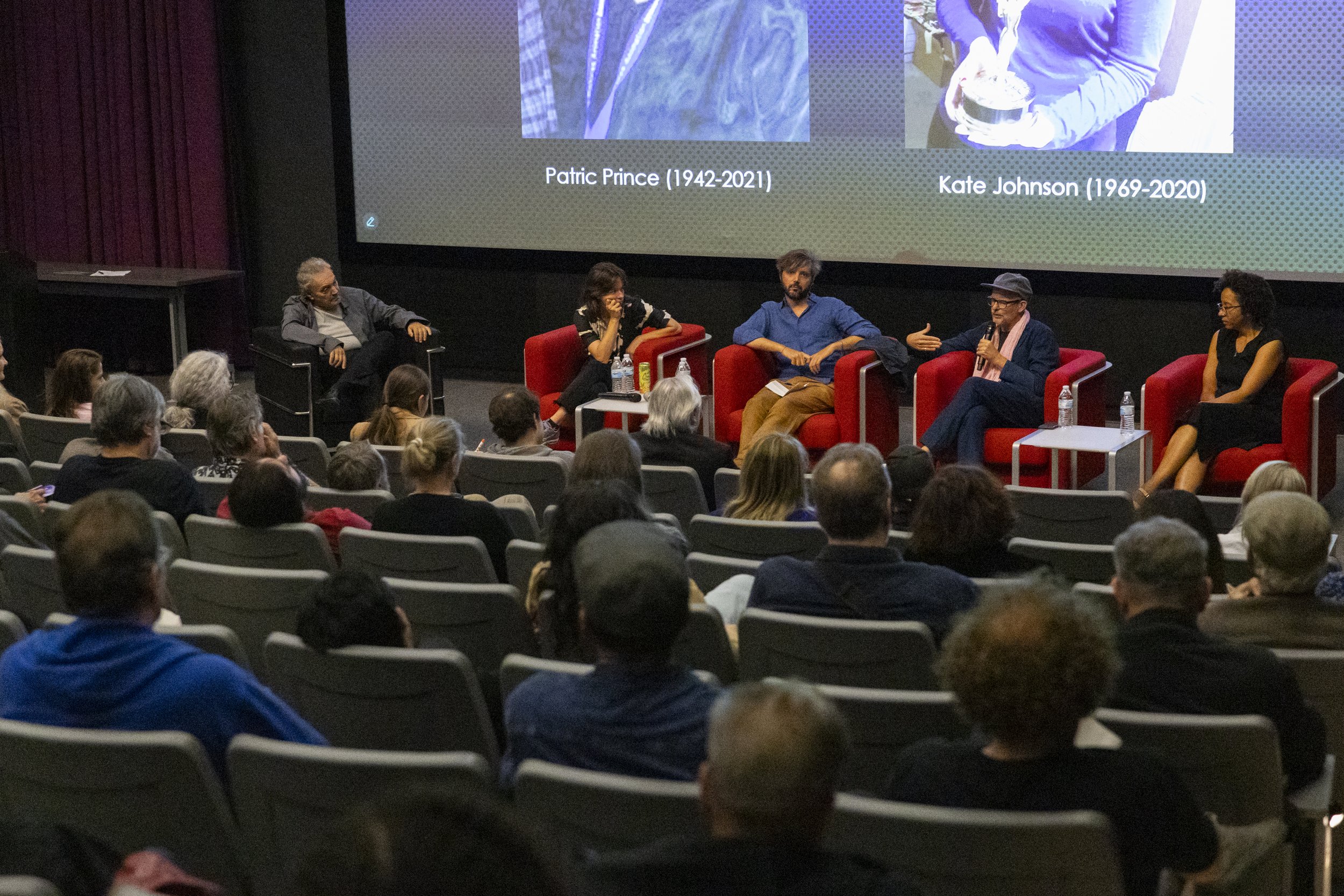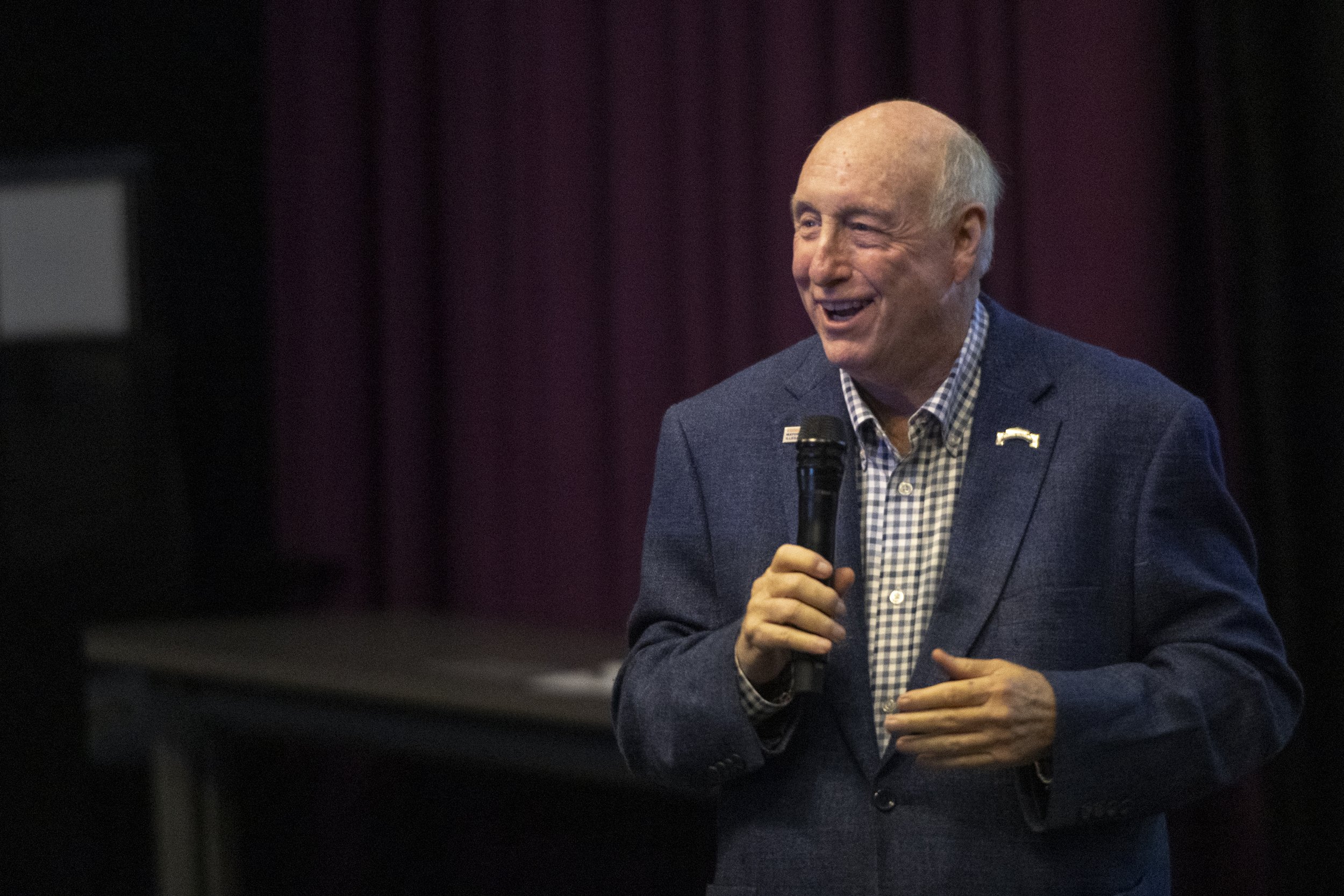Hacking the Timeline: Integrating Digital Art into Mainstream Art History







In an era where digital innovation shapes our cultural landscape, the panel discussion titled Hacking the Timeline: Integrating Digital Art Within Mainstream Art History brought together leading experts to explore the intricate relationship between digital art and its rightful place in the canon of art history. Hosted at the Santa Monica College (SMC) Center for Media & Design, this in-person event featured Dr. Pietro Rigolo, curator of Modern & Contemporary Art at the Getty Research Institute; Joel Ferre, director of LACMA Lab; Melanie Lenz, curator at the Victoria and Albert Museum; and Pascaline Moricome, professor at the University of Jules Verne. Walter J. Meyer, chair of the Art Department at Santa Monica College (SMC), welcomed attendees and set the stage for the discussion.
Moderated by Michael J. Masucci, the discussion delved into the challenges and opportunities of incorporating the rich, diverse history of digital, media, and electronic arts into mainstream narratives. With Santa Monica’s Mayor Phil Brock in attendance, the panel addressed critical questions about cultural awareness, the role of institutions, and the key figures who have championed art.
This event was part of Robert Berman Gallery's contribution to the Getty initiative Pacific Standard Time: Art & Science Collide, co-sponsored by Santa Monica College, L.A. ACM SIGGRAPH (the Los Angeles Chapter of the Association for Computing Machinery's Special Interest Group in Computer Graphics), and the DNA Festival Santa Monica, along with 18th Street Arts Center, EZTV, and Bergamot Arts Center. The night shined a spotlight on the importance of preserving and advocating for digital art in our ever-evolving society.
Digital art is not just a new medium, it's a revolutionary force reshaping our understanding of creativity and culture in today's world. Incorporating digital art into the canon of art history is essential for several reasons. It recognizes the significant impact of technology on artistic practices, which reflects how society has evolved and challenged traditional beliefs of authorship and originality. Understanding these changes helps us appreciate the dynamic relationship between art and technology.
Digital art also highlights diverse voices and perspectives that are often overlooked in traditional narratives. By acknowledging these contributions, we enrich our understanding of artistic innovation. As Masucci said, “It’s not about taking anybody out; it’s about adding people in.” This sentiment emphasizes the need to expand our definitions of art to create a more inclusive history that represents various experiences and backgrounds.
Digital art has opened up a realm of possibilities for many artists, providing new channels for expression. We see this in movies like Coraline and Spider-Man: Across the Spider-Verse, in video games like Zelda, and even in social media platforms like Instagram. These mediums showcase how digital art, along with virtual reality and AI, advocates for more diverse voices. It also helps preserve artistic work while fostering collaboration and creative engagement across communities, lowering barriers to creating and sharing art.
During the concluding remarks, Masucci captured the essence of the discussion by reflecting on the nature of history itself. He noted that history is shaped by those who advocate for its preservation, emphasizing that it is formed by the choices of those who decide what is worthy of remembrance. This perspective reinforces the necessity of including digital art in our collective cultural memory.
The discussions at the event highlighted how important digital art is in our lives today, reminding us that these stories deserve a place in art history. Embracing digital art not only helps us understand different artistic styles but also strengthens our connection to the diverse voices that shape our culture. By recognizing the value of digital art, we take a meaningful step toward a more inclusive view of creativity. This view celebrates the many experiences that make us unique and allows every artist to be seen and heard. This journey toward inclusivity is about expanding our understanding of art and honoring the vibrant stories that unite us.
For more information about the event and to explore other related events, please visitDNA Festival Santa Monica.
